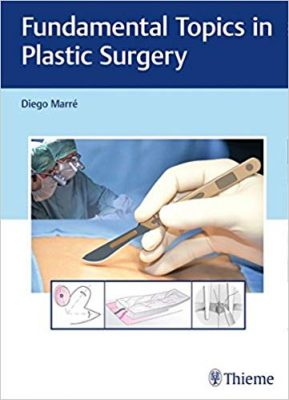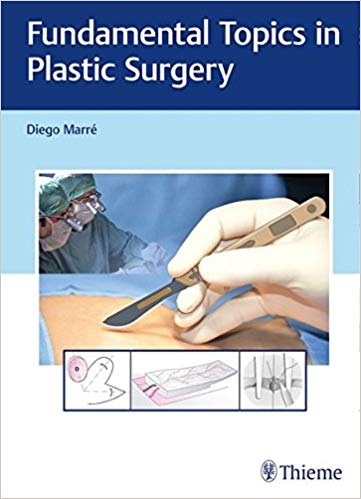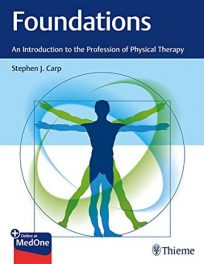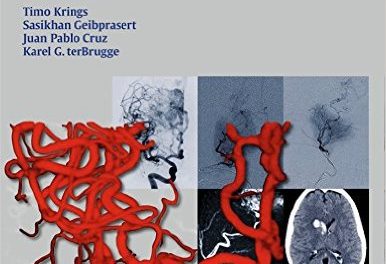 Editor: Diego Marre, MD
Editor: Diego Marre, MD
Publisher: Thieme – 417 pages
Book Review by: Nano Khilnani
Plastic surgery is a specialty that does not have an anatomical region of its own, unlike other specialties like cardiology or nephrology for example. Plastic surgeons can work on the abdomen, breasts, buttocks, the face and its features, or many other areas of the human body.
They reshape those areas by liposuction or removal of fat, such as from the abdominal area, or from the buttocks. Plastic surgeons also do the reverse, called augmentation, by injecting fat into the breasts for example, to make them look like what the patient desires.
The author Dr. Diego Marre writes in the Preface that the word ‘plastic’ comes from the Greek term ‘plastikos’ which means “to mold or to shape,” but this definition “tells us little about what we actually do as plastic surgeons,” he asserts.
He points out that there is much more that they do, and “in the very broad sense, plastic surgery could be thought of as the surgical specialty in charge of “repairing what is wounded, replacing what is missing, restoring what is altered, and reshaping what is deformed.”.
He laments that the public’s view of plastic surgery is “generally limited to the aesthetic branch of our specialty, which despite its great value, does not represent the whole scope of plastic surgery outside its cosmetic realms.” He points out that this view of plastic surgery “is highly contradictory, as the roots of plastic surgery actually derive from its reconstructive legacy.”
Forty-six specialists in plastic and reconstructive surgery and in oral and maxillofacial surgery from Chile and Spain, as well as from six other countries – Brazil, Canada, India, Italy, the Netherlands, and the United States – wrote the chapters of this book. We list below the titles of its 21chapters to provide you an overview of the topics covered in this book:
- Section I. Principles
- Patient Safety in Plastic Surgery
- Wound Healing
- Wound Management and Pressure Sores
- Negative Pressure Wound Therapy
- Local Anesthetics and Common Nerve Blocks
- Soft Tissue Infections and Antibiotics in Plastic Surgery
- Implants and Biomaterials
- Principles of Osteosynthesis
- Essentials of Dermatology for Plastic Surgeons
- Laser Therapy: Principles and Applications in Skin Diseases
- How to Set Up a Research Protocol in Plastic Surgery
- Section II. Techniques
- Basic Surgical techniques, Sutures, and Wound Closure
- Grafts: Skin, Fascia, Nerve, Tendon, Cartilage, and Bone
- Fat Grafting
- Vascular Anatomy of the Skin and Muscles
- Flaps
- Tissue Expansion
- Burns
- Microsurgery
- Facial Trauma
- Head Trauma
You can read the contents of this book online by downloading the e-book version. Go to this website: www.ebookstore,Thieme.com/register and register your copy by inserting the access code found on the inside front cover of your book. Once you download your e-book version, you can read it offline.
“The plastic surgeon is both an artisan and an artist,” writes Dr. Wayne Morrison in his Foreword to this book. He is plastic and hand surgeon in the Department of Plastic, Reconstructive and Hand Surgery at St. Vincent’s Hospital in Melbourne, Australia. He says the surgeon is trying to re-create what may have been lost due to aging, disease, or injury.
Dr. Marre writes that the plastic surgeon works with the patient’s living tissue, and with that tissue’s own “fickle intrinsic power of repair and memory” his repair process will be “a replica of what was lost in form and function, with the almost invisible mending of primary healing.”
The surgeon can have an outcome of horror or of pleasing success. How that outcome will be, is dependent upon his or her close knowledge of the fundamental principles of plastic surgery, and of course the level of his or her surgical skills.
This book provides those fundamentals, and is aptly titled Fundamental Topics in Plastic Surgery. Dr. Morrison writes that this book “is the one we all wish we had read before our entrenched habits took hold. It teaches us principles we did even know we did not know. It is targeted at the plastic surgery trainee / resident level, but it is an excellent source for those who are not trainees as well as those who are specialists.”
Editor:
Diego Marre, MD is Consultant in the Department of Plastic and Reconstructive Surgery and Burns in the Clinica Las Condes at the Emergency Public Hospital in Santiago, Chile.







